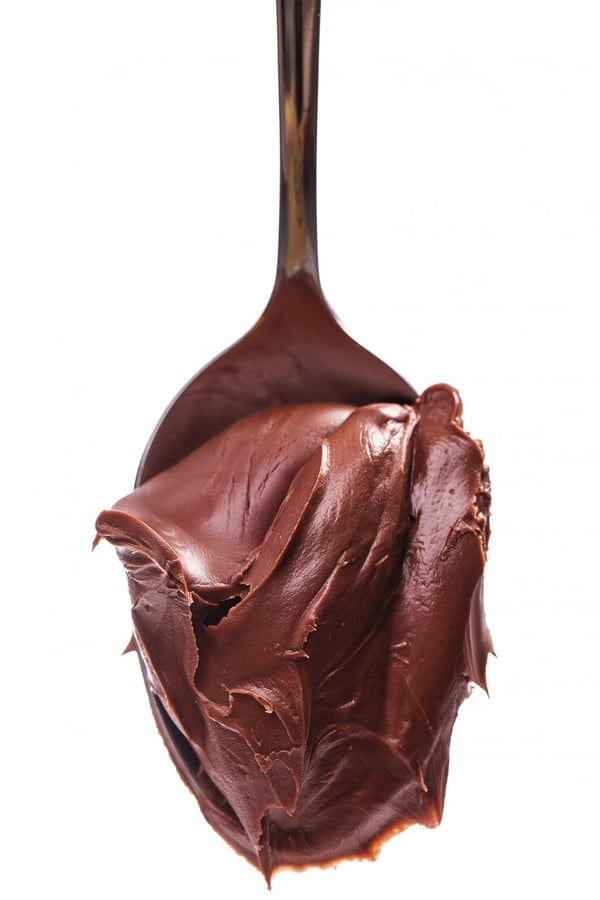Chocolate Part 1 of 6
The scientific name for the tree that chocolate comes from, Theobroma cacao, means “food of the gods.” The smell of chocolate increases theta brain waves, which triggers relaxation. The mere smell of chocolate increases theta brain waves, which trigger relaxation. In fact, a 2013 study conducted at Hasselt University in
HEALTHY & FUN FRUITY FACTS


Chocolate Part 1 of 6
The scientific name for the tree that chocolate comes from, Theobroma cacao, means “food of the gods.”
The smell of chocolate increases theta brain waves, which triggers relaxation. The mere smell of chocolate increases theta brain waves, which trigger relaxation. In fact, a 2013 study conducted at Hasselt University in Belgium showed that when the scent of chocolate was diffused in bookstores, sales of books increased by 22% of any genre and a whopping 40% more likely to buy cookbooks or romance novels.
Chocolate also contains tryptophan, which the brain uses to produce serotonin, a hormone that causes generalized euphoria. So, eating chocolate really does make you happier!
Chocolate has over 600 flavor compounds, while red wine has 200.
It takes approximately 400 cacao beans to make one pound (450 gr.) of chocolate. Each cacao tree produces around 30 to 60 pods per year. Each pod contains around 40 beans. So, each tree only produces 2 to 3 pounds of chocolate per year. Add to that the fact that cacao pods are harvested by hand, and you’ll start to understand why good chocolate is expensive.
According to the book And Then God Made Chocolate! by Sherry-Marie Perguson, each cacao tree only produces enough beans to make 10 regular-sized Hershey's bars a year.
Chocolate is the only edible substance to melt around 32°C (90°F), just below human body temperature. That’s why chocolate melts in your mouth.
Candy bars generally have less than 10 milligrams of caffeine, but the darker the chocolate, the higher the caffeine content.
America consumes almost 50% of the world’s chocolate.
According to the International Cocoa Organization, European’s account for almost half the world’s chocolate consumption. They estimate the average Brit, Swiss, or German eat 11 kilograms (24 pounds) of chocolate a year.
The country whose people eat the most chocolate is Switzerland, with 22 pounds eaten per person each year. Australia and Ireland follow with 20 pounds and 19 pounds per person, respectively. The United States comes in at 11th place, with approximately 12 pounds of chocolate eaten by each person every year.
The amount of chocolate a country eats on average is linked to the number of Nobel Laureates that country has produced.
In celebration of its 100th birthday, Thorntons created the world’s largest chocolate bar – weighing a record breaking 5,792.50 kilograms (12,770 pounds).
So many Toblerone bars are sold each year that, if they were to be laid end to end, they would go on for 62,000 kilometers (38,525 miles) which longer than the circumference of the Earth.
Milky Way candy bars are not named after the galaxy. The name came from the malted milkshakes whose flavor they originally intended to mimic.
Known as “The World’s Most Expensive Chocolate Bar,” the Wispa Gold Wrapped Bar is offered by Cadbury. It was designed as a marketing campaign to relaunch their brand of caramel chocolate bars, Wispa Gold. But this expensive version is actually wrapped in an edible gold leaf. It cost $1,430 per bar.
To’Ak chocolate is one of the most expensive chocolates in the world, Each 50 gram (1.7 oz) bar is in a handcrafted Spanish Elm wood box individually engraved with the bar number.
There are 2 types of cacao tree. Most chocolate comes from Forastero beans, which are said to be easier to grow but the Crillo bean makes much tastier chocolate.
There is a rare fourth kind of chocolate in addition to the classic milk, dark, and white varieties: blond chocolate. Blond chocolate, named after its striking color, was actually made by accident by pastry chef Frédéric Bau, according to the chocolate's founding company, Valrhona.
White Chocolate isn’t technically Chocolate, as it contains no cocoa solids or cocoa liquor. White “chocolate” contains cocoa butter instead. Since cocoa butter doesn't actually taste good on its own, it's mixed with milk fat, vanilla, and sugar for a sweeter flavor.
Cocoa butter is a by-product made from crushing roasted cacao beans. As well as in chocolate it’s also used in cosmetic products including massage oils and skin cosmetics. It’s one of the most stable, highly concentrated natural fats and as it melts at just below average body temperature it’s easily dissolved into the skin, perfect for moisturizing creams and other products.
Quality dark chocolate is rich in fiber, iron, magnesium, copper, manganese, and a few other minerals. For dark chocolate to be beneficial, cacao or chocolate liquor should be the first ingredient listed, not sugar.
Research suggests that dark chocolate boosts memory, attention span, reaction time, and problem-solving skills by increasing blood flow to the brain. Studies have also found that dark chocolate can improve the ability to see in low-contrast situations (such as poor weather) and promote lower blood pressure, which has positive effects on cholesterol levels, platelet function, and insulin sensitivity
Eating dark chocolate every day reduces the risk of heart disease by one-third.
The bioactive compounds in cocoa may improve blood flow in the arteries and cause a small but statistically significant decrease in blood pressure. Dark chocolate is actually beneficial for your heart health. A study conducted by Walden University's School of Nursing shows that blood pressure significantly decreased in participants, mainly due to the chocolate's heavy concentration of flavonoid and polyphenol antioxidants.
Cocoa and dark chocolate have a wide variety of powerful antioxidants. In fact, they have way more than most other foods.


